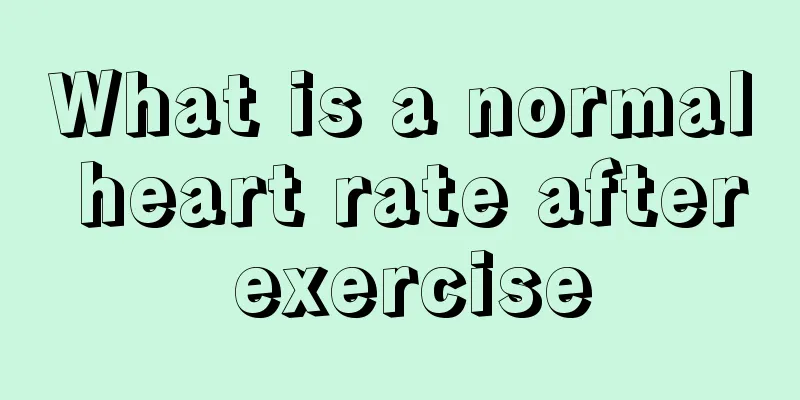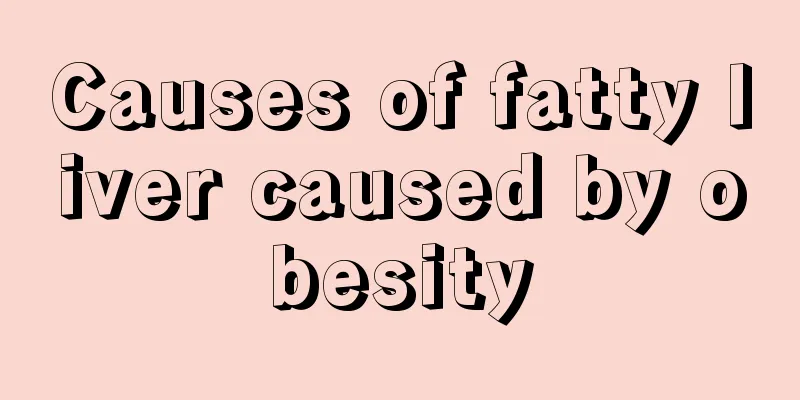What is a normal heart rate after exercise

|
The heart is the engine of the human body. If we have no heartbeat, the whole person will stop living and we will leave this world. Therefore, whether the heart is healthy is very important to us. Normally, our heart rate is generally 75 beats per minute, which shows that our physical condition is very good. So what is our normal heart rate after exercise? Let’s find out with the editor below. The exercise heart rate varies depending on the intensity of the exercise. The heart rate for medium and low intensity exercise is between 110-140 beats/minute, and the heart rate for more intense exercise such as weight loss is between 160-180 beats/minute, and the maximum does not exceed 210 beats/minute. Reference: The human resting heart rate is 60-100 beats/minute, with an average of about 75 beats/minute. Exercise heart rate refers to the heart rate state maintained by the human body during exercise. Whether it is aerobic exercise or anaerobic exercise. Only by having a suitable heart rate can you achieve better exercise results. Maintaining an optimal exercise heart rate is important for both exercise effectiveness and exercise safety. What is particularly important during exercise for people with "three highs" is the heart rate. If the heart rate is too high, it will be harmful to physical health, causing nausea, dizziness, and chest tightness. For diabetic patients, it will cause a sharp drop in blood sugar, and the fat reduction effect will not be good. A low heart rate does not harm the body, but the exercise effect is not good. Heart rate formula: The first one is: target heart rate = (maximum heart rate - resting heart rate) x intensity percentage + resting heart rate The second is: target heart rate = maximum heart rate x intensity percentage Most people use the above two formulas to control the intensity when doing aerobic exercise, but many people mistakenly believe that the first formula is just a safer and more effective formula, but this is not the case. There are roughly two ways to control the intensity of aerobic exercise: one is to use the percentage of maximum heart rate, and the other is to use the percentage of maximum oxygen consumption. The maximum oxygen consumption percentage is often 10% higher than the maximum intensity percentage. That is to say, the intensity of 60% of the maximum heart rate is equal to the intensity of 50% of the maximum oxygen consumption. The exercise intensity calculated by the first formula above is actually equivalent to the exercise intensity of maximum oxygen consumption. It is safer because the individual's static heart rate is included. However, when setting the intensity, do not confuse it with the percentage of maximum heart rate, otherwise problems will easily arise when arranging training for special groups of people. Exercise Tips In recent years, incidents of sudden death due to heart disease have frequently appeared in the news. When it comes to heart problems such as angina, arrhythmia, and atrial fibrillation, many people seem to be able to identify with the symptoms. Your heart feels uncomfortable when you are angry, and it also feels uncomfortable when you are happy; your heart cannot bear it if you exercise too fast, and it also cannot bear it if you do not exercise. Faced with so many heart problems, how can we exercise more scientifically? In fact, it is not difficult to find exercise that is good for heart health. The difficult part is how to grasp the "degree" of exercise. Before you start exercising, it's best to make an "exercise plan" for heart health. We all know that doctors have "medicine" to treat diseases, but they also must have "prescriptions". "Prescriptions" are the key to curing diseases. The same principle applies to exercise. Everyone's physique, medical condition, lifestyle, and mental state are different. Therefore, people with poor heart should not only consider which exercises are good for the heart, but also consider what kind of exercise is suitable for them and "design" an exercise plan that suits them. The so-called "sports design" refers to a relatively complete fitness system. Before designing, you need to conduct a comprehensive analysis to determine the fitness model that suits you. For most people, the best time to exercise is between 3pm and 9pm, and the duration should be controlled between half an hour and one hour. The intensity of exercise can be calculated according to the following method: Calculation method for optimal exercise heart rate control zone: (suitable for general people) (220─current age)×0.8=maximum exercise heart rate (220─current age)×0.6=minimum exercise heart rate Optimal exercise heart rate control zone calculation method: (suitable for people with heart problems) Morning pulse × 1.8 = upper limit of heart rate control Morning pulse × 1.4 = lower limit of heart rate control. If you control your heart rate during aerobic exercise, you can not only protect and enhance your heart function, but also burn fat to the maximum extent, achieving good plasticity and fat reduction effects. Exercise heart rate: 1. People who are healthy and in good physical condition The aerobic heart rate can be controlled at 120~180 beats/minute, which can be further divided into small exercise at 120~140 beats/minute, medium exercise at 141~160 beats/minute, and large exercise at 161~180 beats/minute. 2. If you want personalization, you can use the common formula to calculate Reasonable heart rate during aerobic exercise = (maximum heart rate - resting heart rate - age) × Q + resting heart rate. The maximum heart rate in the formula is ≈ 210; the resting heart rate refers to the heart rate in a relatively quiet state before exercise; Q represents the amount of exercise, less than 50% is a small amount of exercise, 50%~75% is a medium amount of exercise, and more than 75% is a large amount of exercise. For example, if a person is 50 years old, has a resting heart rate of 76 beats per minute, and wants to do aerobic exercise with a small amount of exercise, the aerobic heart rate should be (210-76-50)×50%+76=118 beats per minute. 3. For middle-aged and elderly people, the simplest and safest method can be used Appropriate aerobic exercise heart rate = 170-age. For example, if you are 60 years old, your heart rate should be controlled at 170-60=110 beats per minute when doing aerobic exercise. For the weak and older people, for safety reasons, you can choose (170-age)×0.9. It is worth noting that the above content is only a general rule. It must be used flexibly according to the specific situation during implementation. The health status, environment, season, mood, etc. at different times will have a certain impact on the choice of exercise volume. At this time, the exercise intensity and exercise time should be reduced accordingly, and the heart rate index should also be reduced accordingly to ensure safety. In short, it is very necessary to learn to count your heart rate (pulse) during exercise in order to control the amount of exercise. It not only adds a layer of safety for people participating in exercise, but also helps to ensure the fitness effect of exercise. We can practice feeling the radial artery at the wrist or the submandibular artery at the mandible (chin) to count our pulse. If conditions permit, wearing a heart rate monitor would be ideal. |
<<: Can exercise improve skin?
>>: Can I take a shower after exercising?
Recommend
What tests are done in the six-week follow-up after single thyroidectomy?
Six weeks after thyroid cancer resection, a follo...
The efficacy of the starving grass
There are many ingredients around us that we are ...
What are the specific drugs for lymphoma
For patients with malignant lymphoma, treatment i...
Jaw pain and dizziness
If one part of a person's body is uncomfortab...
Late-stage symptoms of nasopharyngeal carcinoma
In the late stage of nasopharyngeal cancer, sympt...
What's wrong with the ears growing hair
In life, many people have hair growing on their e...
Can I have children in the early stages of liver cancer?
Theoretically, as long as the reproductive system...
Which cup is the best?
There are a wide variety of cups on the market to...
Types of malignant melanoma, melanoma
Nowadays, many people don’t know much about melan...
Will vitreous opacity cause blindness? Early detection and treatment are needed
Many people know very little about vitreous opaci...
The difference between eyebrow tattoo scabbing and non-scabbing
Everyone must have seen something like scabs. The...
How to remove oil stains from clothes
Usually, when we are not paying attention, oil st...
What should I do if my hair quality is poor
The quality of hair is getting worse and worse. I...
Is it good to fumigate the room with white vinegar?
White vinegar is not only a condiment in the kitc...
What should I do if my cervical lymph node tuberculosis becomes suppurative? It turns out that this treatment is the most effective
Cervical lymphadenopathy is a common disease in d...









